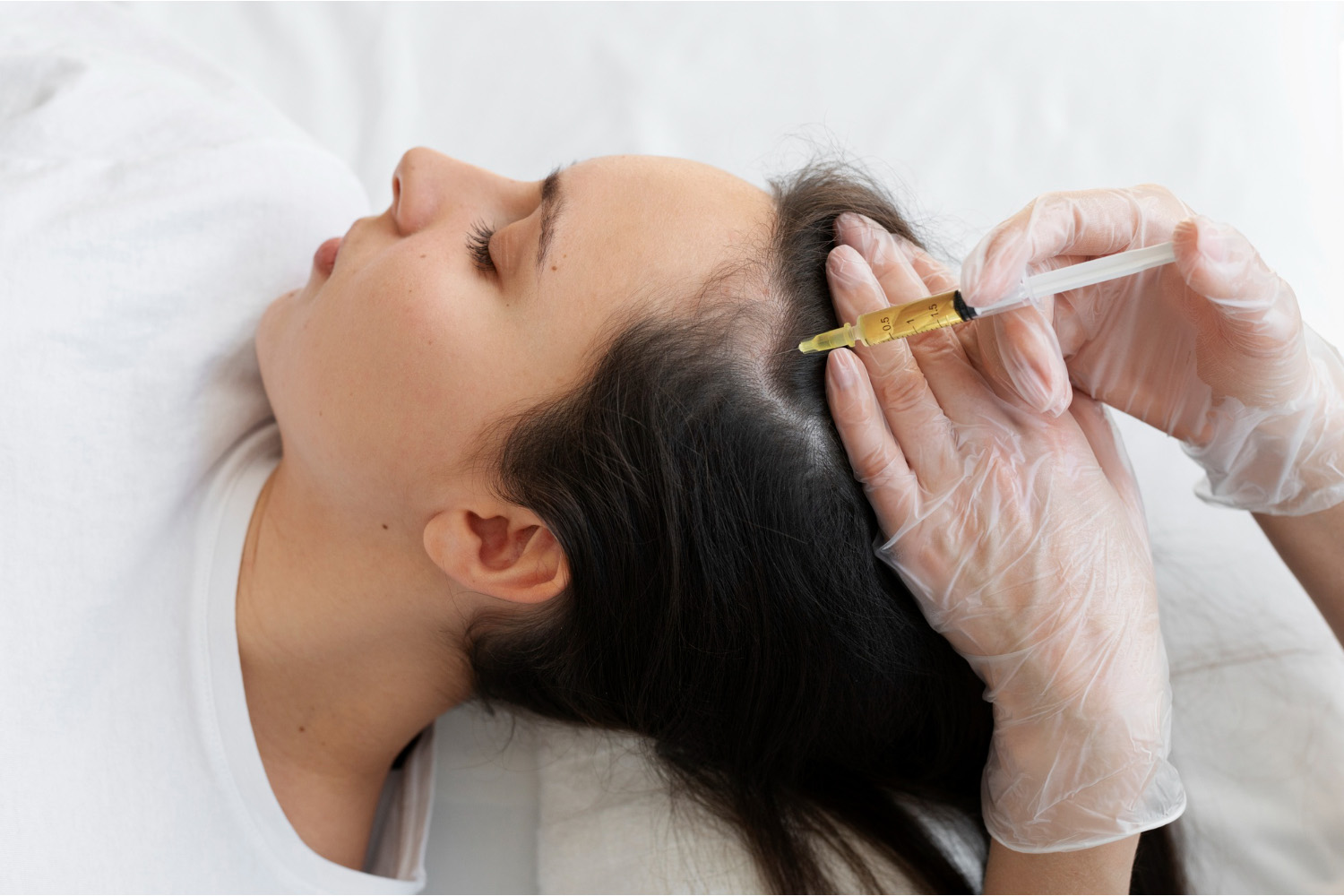In discussions surrounding hair loss, male pattern baldness often takes center stage. However, it’s crucial to recognize that hair loss affects both men and women, albeit in different patterns and with varying underlying causes. Female pattern baldness, while less common and less frequently discussed, can be just as distressing and impactful on one’s confidence and self-esteem.
Unveiling Female Pattern Baldness
Female pattern baldness, also known as androgenetic alopecia, typically presents as a gradual thinning of hair, particularly on the top and crown of the scalp. Unlike in men, where hair loss often leads to a receding hairline and bald spots, women with this condition tend to experience overall thinning without distinct bald patches. The hairline usually remains intact, but the volume and density of hair diminish over time.
The exact cause of female pattern baldness is multifactorial and can involve genetics, hormonal fluctuations (such as those occurring during menopause), and aging. Additionally, factors like stress, certain medications, and underlying medical conditions can exacerbate hair thinning in susceptible individuals
Exploring PRP Treatment as a Hair Restoration Solution
Platelet-Rich Plasma (PRP) therapy for hair loss has emerged as a promising treatment option for various medical and aesthetic conditions, including hair loss. PRP involves extracting a small sample of the patient’s blood, processing it to concentrate the platelets and growth factors, and then injecting the resulting PRP solution into the scalp at the targeted areas experiencing hair loss.
How PRP Works for Female Pattern Baldness
PRP therapy works through several mechanisms to promote hair growth and improve hair density:
- Stimulation of Hair Follicles: Platelets contain growth factors that stimulate the activity of hair follicles, promoting hair growth and prolonging the hair growth cycle.
- Improved Blood Circulation: By injecting PRP into the scalp, blood circulation to the hair follicles is enhanced, delivering essential nutrients and oxygen for optimal follicular function.
- Reduction of Inflammation: PRP therapy has anti-inflammatory properties, which can help mitigate inflammation in the scalp that may contribute to hair loss.
The PRP Treatment Process
PRP therapy for female pattern baldness typically involves a series of treatment sessions spaced several weeks apart to achieve optimal results. During each session, a healthcare provider administers PRP injections directly into the scalp using a fine needle. The procedure is generally well-tolerated and requires minimal downtime, allowing patients to resume their daily activities immediately afterward.
Expectations and Results
While individual results may vary, many women undergoing PRP treatment for female pattern baldness report noticeable improvements in hair thickness, volume, and overall scalp health. However, it’s essential to maintain realistic expectations and understand that PRP therapy for hair loss may not fully restore hair to its pre-loss state in all cases.
Conclusion: Empowering Women with Hair Restoration Options
Female pattern baldness can have a significant impact on a woman’s confidence and quality of life. Fortunately, advancements in medical aesthetics, such as PRP treatment, offer hope and effective solutions for women seeking to address hair loss and rejuvenate their appearance.
If you’re experiencing hair thinning or female pattern baldness, consulting with our qualified medical professional specializing in hair restoration treatment for women and men can help determine the most suitable treatment approach for your unique needs. With the right care and treatment plan, you can take proactive steps towards restoring your hair and reclaiming your confidence.
Book a consultation at our PRP clinic in Niagara Falls.
MD TREATMENT LOUNGE
8302 McLeod Road – Unit 2
Niagara Falls, Ontario L2H 0Y7
(905) 353-0707
info@mdtreatmentlounge.com
The information provided in this blog is intended for educational and informational purposes only. It is not intended as a substitute for professional medical advice, diagnosis, or treatment. Always seek the advice of your physician or other qualified healthcare provider with any questions you may have regarding a medical condition or treatment.
The views and opinions expressed in this blog are those of the author(s) and do not necessarily reflect the official policy or position of any other agency, organization, employer, or company. The author(s) are not medical professionals, and the content of this blog should not be interpreted as medical advice.
The effectiveness of any treatments or procedures discussed in this blog may vary from person to person and should be determined in consultation with a qualified medical professional. Any reliance you place on the information provided in this blog is done at your own risk.
The inclusion of any product or service in this blog does not imply endorsement. The author(s) are not responsible for any errors or omissions in the content of this blog or for any damages arising from the use of the information provided herein.
By reading this blog, you agree to release, indemnify, and hold harmless the author(s) from any and all claims, damages, or liabilities arising from your use of or reliance on the information presented herein.



